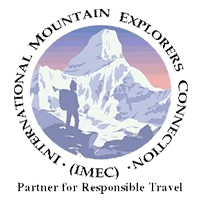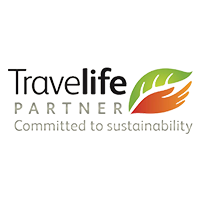KILIMANJARO PROJECT 2025 - 2026
“Reserve your spot and be part of the world’s premier BBQ event! Participate in this extraordinary experience and earn your certificate from Guinness World Records.”

Introduction
Join us for an extraordinary experience as we embark on the Kilimanjaro Barbecue adventure, a remarkable journey aimed at setting a new Guinness World Record. This isn’t just any hike; it’s an opportunity to create history as we aim to set a Guinness World Record for the highest barbecue party in the world, on the slopes of Africa’s majestic Kilimanjaro. Picture yourself surrounded by breathtaking landscapes, vibrant cultures, and the exhilarating spirit of adventure while enjoying a delightful barbecue feast under the stars of Africa. Imagine standing beneath the majestic shadows of Mount Kilimanjaro, where the air is filled with the tantalizing aromas of traditional Tanzanian barbecue.
Fundraising Event
The event promises to be one for the history books! Attendees will experience the breathtaking views and fresh mountain air while indulging in a delicious barbecue feast. This gathering will not only provide a remarkable experience for those fortunate enough to attend but will also foster a sense of community and support for a critical cause. As part of this unique experience, we are excited to host an official Guinness World Records adjudicator at the end of our journey to ensure that our ambitious record attempt is recognized and celebrated. Every attendee will receive a personalized Guinness World Record certificate, commemorating your participation in this remarkable event. Imagine holding a piece of history with your name proudly displayed—a tangible reminder of your adventurous spirit!
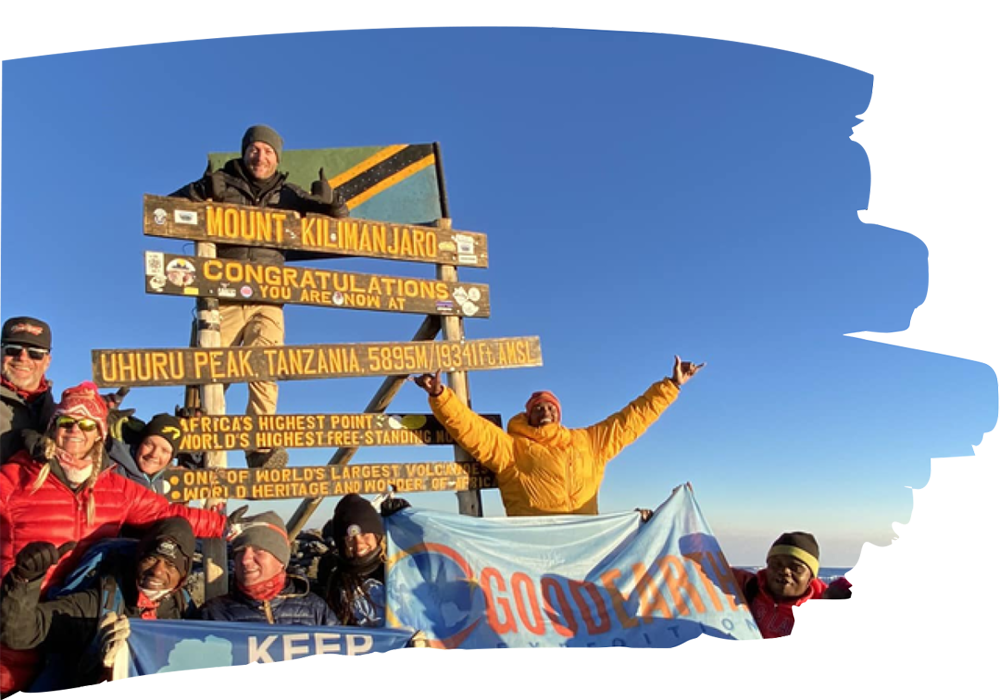
The Experience

The Cause
Beyond the adventure, this summit amplifies the urgent call to prevent childhood deaths from malaria in Tanzania. Ten percent of proceeds will be used to purchase mosquito nets and save lives.
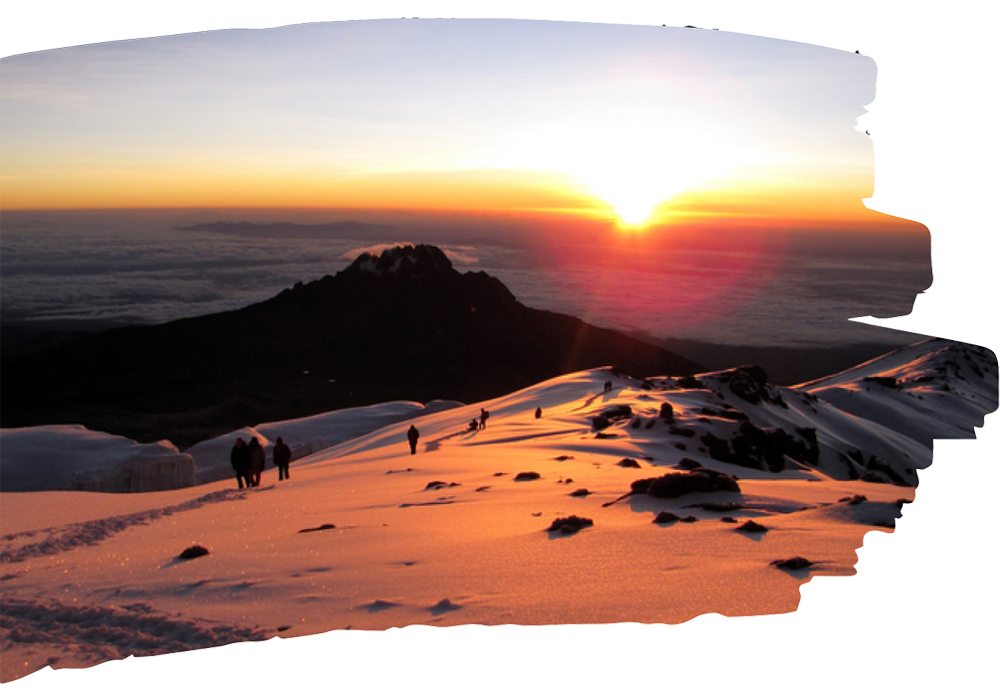
Cost and Dates
Many price options available! Follow QR codes for details. The journey begins on July 15, 2026. Limited spots available!
QUESTION & ANSWERS ABOUT THE EVENT (AKA FAQs)
The event promises to be one for the history books! Attendees will experience the breathtaking views and fresh mountain air while indulging in a delicious barbecue feast. This gathering will not only provide a remarkable experience for those fortunate enough to attend but will also foster a sense of community and support for a critical cause. Malaria remains a significant public health challenge in Tanzania, particularly affecting young children. It is transmitted by mosquito bites, and prevention through the use of mosquito nets is crucial. Each net can mean the difference between life and death for a child who is vulnerable to this preventable disease. DONATE HERE
1 Rest day
8 Day Kilimanjaro Climb
1 Rest day
6 Day Tanzania Safari
Kilimanjaro trekking total distance: 43 miles
Starting Point: Londolos gate
Difficulty Level: Moderate
Success Rate: Very High
Highlight: Traverses four out of five climatic zones of Kilimanjaro
FLIGHT INFO – book your international flight to (Kilimanjaro International Airport)
NOTE: If you plan to conclude your trip in Zanzibar following your Kilimanjaro climb and safari, or after your safari alone, please book your international flights to and from Zanzibar. We will then coordinate your domestic flight to Kilimanjaro accordingly to ensure a seamless travel experience.
Upon your arrival in Tanzania you will be warmly welcomed by our dedicated driver, who will provide a personalized meet-and-greet service to ensure your journey begins on a positive note. As you transition to your accommodation, rest assured that every detail has been meticulously arranged to guarantee a smooth and enjoyable experience.
ARRIVAL DATES – 13th or 14th JULY 2026
TRIP START DATE – 15th JULY 2026
Flight Best route – Via, Amsterdam, Doha, Istanbul, London and France.
We can’t wait to show you the best of Tanzania on this exclusive BBQ adventure!.
6- Years as youngest
85 – Years as the oldest.
WHO IS THIS TRIP FOR?
Solo, Couple, Family, Honeymoon, Friends and Corporates.
U.S. citizens, British, Canadian, German are required to obtain a visa to enter Tanzania for tourism or business purposes. The most convenient method is to secure an eVisa online prior to your trip. While it is possible to obtain a visa upon arrival at designated entry points, it is generally advisable to apply in advance to ensure a smoother travel experience. Apply for your Visa here
- Valid passport with at least six months of validity beyond your intended stay.
- Passport-sized photograph.
- Proof of accommodation in Tanzania.
- Return flight ticket or proof of onward travel.
- Sufficient funds to support your stay.
- Visa fee payment (US$100 for US citizens)
At Good Earth Expedition, we specialize in working with top-tier lodges and camps to ensure that their guests can enjoy the ultimate luxury and relaxation experience without compromising their health. We understand the importance of preventing sickness and avoiding unnecessary shots, and have developed a comprehensive approach to keep you safe and healthy during your stay.
Tanzania, a gem in Africa known for its stability and safety. The country is ranked among the top 10 safest countries globally. Tanzania offers a well-developed tourism infrastructure and a serene escape from the concerns of crime that can sometimes overshadow travel in other African nations. You will enjoy a journey filled with wonder and peace in the heart of Tanzania’s.
So, its time to pack your bags and get ready for an unforgettable adventures in Botswana. With so much incredible wildlife to see, you don’t want to miss a moment!
Planning a trip can be exciting, but unforeseen circumstances can sometimes disrupt our plans. That’s why it’s essential to have reliable travel insurance in place. Whether it’s a last-minute cancellation or unexpected changes, having insurance ensures that you’re covered. Not only does it provide financial protection for you. Lodges and accommodations need to prepare for your arrival which makes refunds difficult, especially in remote locations. Travel with peace of mind knowing that you’re prepared for whatever comes your way. Get your insurance quote here
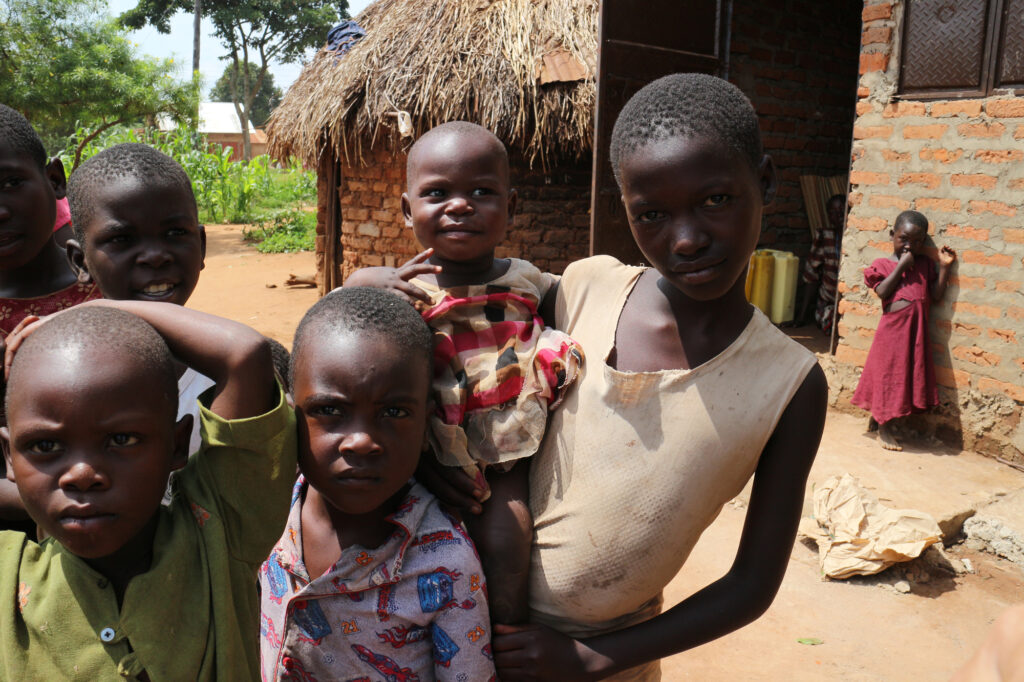
uNFORGETABLE MOMENTS SHARED BY OUR TRAVELERS
“We invite you to be inspired by the captivating adventure stories of our travelers. Join us on our next journey and experience the thrill of exploration firsthand.”
What’s included
Oxygen tank/s
- All Transportation
- All Accommodation in Arusha
- Kilimanjaro Certificate of achievement.
- Kilimanjaro permit
- Private toilet, special service
- Full board Kilimanjaro
- English speaking guides
- Kilimanjaro Crews
- All Park-fees
- Air Rescue
- 3 Porters per person
- Camping fee
- Four season expedition tents
- Kili Training tips/ideas
- All your accommodation for 10 or 16 days if you are doing a safari
- Event entrance fee
- Safari – Full board – meals, drinks, park fee & Jeep Service
This Kilimanjaro gear packing list is meticulously organized to distinguish between items you will carry in your daypack and those that will be transported by porters in a larger duffel bag. Please note that individual requirements may vary; therefore, it is essential to consult with your tour operator to confirm their specific guidelines and weight restrictions.
Kilimanjaro Figure Out That Altitude Doesn’t Care How Great You Are
Your body may have a tougher time responding to the demanding exercise of trekking and carrying your gear since high altitude results in less oxygen being accessible. Try attempting this feat with less air, which is already challenging under ideal conditions.
If you climb the mountain too quickly, you could get acute mountain sickness (AMS), often known as altitude sickness. You’ll feel worn out and queasy, have headaches, shortness of breath, and even difficulty concentrating.
Most hikers frequently give up their ascent of Kilimanjaro due to these symptoms. Although being physically fit and having some experience climbing at high altitudes will lessen your risk of developing AMS, they do not ensure your safety.
Even the fittest hikers can have problems if they climb too quickly at high altitudes. The easiest method to prevent AMS is to exercise correctly and acclimate gradually. Because you spend more time allowing your body to acclimate to high altitude instead of battling it, a 10- to 12-day Kilimanjaro trip has a better success rate than some shorter hikes.
Kilimanjaro Be Aware That Aerobic Activity Will Prepare Your Heart And Lungs
Even simply being at the foot of Mount Kilimanjaro is like a low-impact cardio workout for your heart and lungs because of the low oxygen levels, and that’s before you even start climbing steep routes with a heavy load!
Anyone can climb Mount Kilimanjaro, but if you haven’t done any intense exercise before your expedition, you’ll tire more rapidly and find breathing difficult. We advise that you begin an aerobic or cardio workout regimen at least six months before your climb.
Your body will become accustomed to utilizing oxygen, while there is a shortage of it when you engage in aerobic exercise to meet the energy demands of your
Kilimanjaro Things To Consider Before Training For Kilimanjaro
Making sure you’re well-rounded to manage both the physical and mental challenges of finishing the trek is the key to preparation for Kilimanjaro.
Along with being ready for your first Kilimanjaro hike, keep in mind the following:
You can hike up and downhill for longer on multiple days straight if your legs are stronger.
Having a fit upper body will make carrying your daypack simple.
When your body is accustomed to exercise, hiking at a high altitude may not cause it to respond as negatively.
Yoga and meditation are essential to avoid injuries, learn how to breathe, and develop the mental focus needed to succeed. Contact us for more details on training
The Lemosho Route is often called the most beautiful trail on Mount Kilimanjaro. It crosses the Shira Plateau from west to east, offering a pleasant and mostly flat hike. This route has fewer crowds until it connects with the Machame Route near Lava Tower.
As one of the newer paths on the mountain, the Lemosho Route shares part of its trail with the Machame Route. However, it has some advantages that make it a great choice, especially for travelers with extra time.
Starting at the Londorossi Gate on the western side of Mount Kilimanjaro, the Lemosho Route leads hikers through a more remote area of the mountain.
The trail takes you through a beautiful rainforest where you might see wildlife. Black and white colobus monkeys and blue monkeys are often spotted, along with small lizards and many types of birds. After the rainforest, the path continues onto the Shira Plateau, crossing it from west to east on easy-to-walk terrain.
Climbing Mount Kilimanjaro can be risky and dangerous. Each year, about ten climbers fall to their deaths, and many more are rescued from the mountain. Around 1,000 climbers are evacuated for safety reasons.
Because of these dangers, it is important to understand the risks of climbing at high altitudes before you start your journey. Following the advice of a professional climber can help reduce the chances of accidents.
Don’t let the risks stop you from having an adventure. Instead, use this knowledge to prepare and plan ahead.
What causes problems on Kilimanjaro? Many deaths on Mount Kilimanjaro are linked to altitude sickness and heart attacks caused by existing health issues. Altitude sickness can cause symptoms that range from a mild headache to serious breathing problems.
It is crucial to be aware of the dangers of high-altitude climbing. Make sure you have proper medical preparation and monitoring. People with pre-existing health conditions should be especially careful when thinking about climbing or trekking at such high elevations.
What is acute mountain sickness? At sea level, the air contains about 21% oxygen. As you climb higher, the amount of oxygen in the air decreases. When you reach 12,000 feet (3,600 meters), there are only 40% of the oxygen molecules available in each breath. This makes it hard for your body to get enough oxygen.
As you continue to climb, your body struggles to adjust to the lower oxygen levels. This condition is called Acute Mountain Sickness (AMS), and it can affect even the healthiest person..
**Acclimatization While Climbing Kilimanjaro**
The main reason for Acute Mountain Sickness (AMS) is climbing too high too quickly. Your body needs time to adjust to lower oxygen levels at high altitudes. This process is called acclimatization, and it is essential for anyone planning to climb. To acclimatize properly, spend two to three days at a specific altitude. During this time, your body undergoes several changes to help it cope with less oxygen. Here’s what happens:
a. Your breathing becomes deeper.
b. Your body makes more red blood cells to carry oxygen.
c. The pressure in your capillaries increases, allowing oxygen to reach parts of your lungs that are usually not used.
d. Your body releases more enzymes that help tissues absorb oxygen.
While we may not cover all the science, symptoms of AMS usually start 12 to 24 hours after reaching a high altitude. These symptoms include:
– Headache
– Dizziness and nausea
– Loss of appetite
– Fatigue
– Shortness of breath
– Poor sleep
– Irritability
**Other Dangers While Climbing Kilimanjaro**
In addition to AMS, climbers should be aware of other risks when climbing Kilimanjaro, such as:
– Hypothermia (loss of body heat due to cold)
– Slipping and falling on rocks
– Avalanches
– Falling off cliffs
– Heart attacks
– Diarrhea
– Cold and respiratory infections
– Twisted ankles
– Tropical diseases like malaria and typhoid
**Final Thoughts**
Recently, there have been reports of deaths and evacuations related to climbing Mount Kilimanjaro. Whether these incidents were due to lack of knowledge, poor preparation, or irresponsible tour operators is still debated. However, climbing Kilimanjaro can be safe if you plan well and prepare in advance. By doing so, you can significantly reduce, if not eliminate, many risks.
Yes, beginners can climb Kilimanjaro. It is a walk-up mountain, which means you don’t need special climbing skills. However, it is still a tough hike at high altitude. To succeed, beginners should prepare well, choose a longer route for better acclimatization, select a trustworthy outfitter, and follow the “pole pole” (slowly, slowly) pace recommended by experienced guides.
**Why Kilimanjaro is Good for Beginners**
**No Technical Skills Needed:**
Kilimanjaro is a trekking peak. You can reach the summit by walking, without needing ropes, harnesses, or ice axes.
**Supported Climb:**
Porters carry heavy gear and equipment. This allows you to focus on hiking with just a small daypack.
**Experienced Guides:**
You will have expert guides with you. They provide instructions and ensure your safety throughout the climb.
**Key Factors for Beginner Success**
**Physical Fitness:**
You don’t need to be a marathon runner, but you should be fit enough to hike for several days.
**Acclimatization:**
This is very important to avoid altitude sickness.
**Choose a Longer Route:**
Longer routes give you more time to adjust to the altitude, which increases your chances of reaching the summit.
**Pole Pole Pacing:**
Listen to your guides and go slowly. This helps your body get used to the height.
**Preparation and Mindset:**
Having mental strength and a positive attitude is essential for facing the challenge.
**Essential Preparation**
**Select a Reputable Outfitter:**
Choose a reliable tour operator with experienced guides for a safe and successful climb.
**Train Beforehand:**
Work on your cardiovascular fitness and endurance to prepare your body for the trek.
**Use Proper Gear:**
Make sure you have good hiking boots and other necessary equipment, as recommended by your outfitter.
You will be responsible for carrying your own daypack, which should weigh approximately 4-5 kg (10-12 lbs). This pack should include essential items such as water, snacks, sunscreen, and extra layers for the day’s hike.
Your larger duffle bag, containing your sleeping gear, additional clothing, and most of your equipment, will be carried by the porters and should not exceed 15 kg (33 lbs).
Items to Include in Your Daypack:
Water: Your guides will provide recommendations on the appropriate amount needed for the day.
Snacks: These are crucial for maintaining your energy levels throughout the hike.
Sun Protection: Sunscreen, sunglasses, and a hat are essential to shield yourself from the sun.
Extra Layers: Bring a jacket and additional clothing to adapt to changing weather conditions.
Personal Items: Include a camera, phone, first-aid kit, and any other essentials you may require.
Items to Be Carried by a Porter:
Duffle Bag: This will serve as your main bag, containing everything you won’t need during the day’s hike, including your sleeping bag, sleeping mat, and most of your clothing.
Weight Limit. Please ensure that your duffle bag does not exceed 15 kg (33 lbs) to facilitate easy transport.
Tips for Efficient Weight Management: Consult Your Guides: They will review your gear and provide guidance on what to bring and what to leave behind.
Use a Duffle Bag: Opt for a large, waterproof duffle bag to securely hold your gear, which will be carried by porters. Leave Unnecessary Items Behind: Any items you won’t need on the mountain can be safely stored at your hotel.
By following these guidelines, you can ensure a more enjoyable and manageable hiking experience.
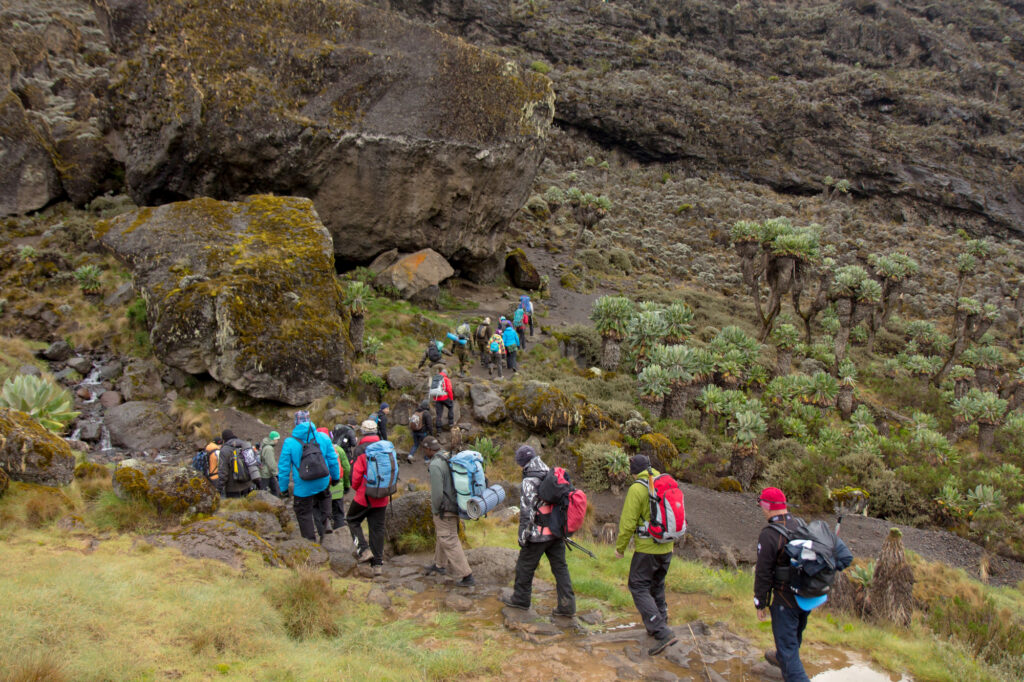
"Our esteemed sponsors and supporters"
Join us for an unforgettable BBQ adventure at the breathtaking heights of Kilimanjaro, standing at 19,341 feet above sea level. Become a sponsor and make a meaningful impact by helping to save the lives of young children in Tanzania. Your support can transform lives and create lasting change in the community.




